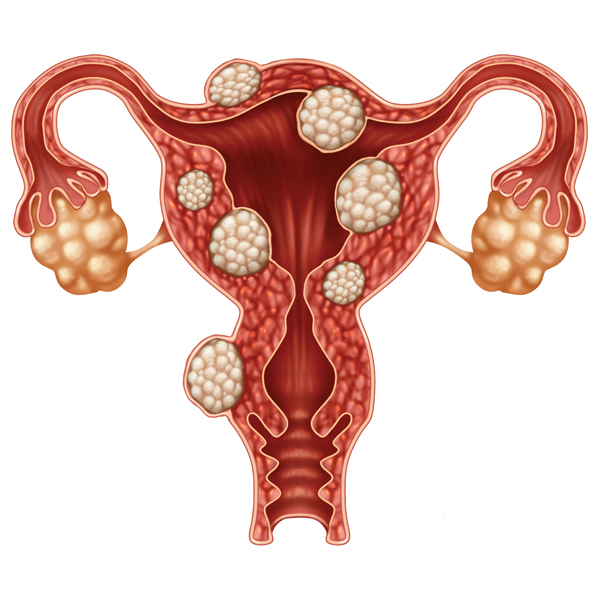Uterine Fibroids and Pelvic Congestion Syndrome Treatment
Treatment for:
Uterine Fibroids/Pelvic Congestion
Procedures offered:
Uterine Fibroid Embolization
Ovarian Vein Embolization
Uterine fibroid embolization (UFE)
Uterine fibroids are benign (non-cancerous) tumors that grow on or within the lining of the uterus. They can range in size from as small as a grape to as large as a cantaloupe. Approximately 20-40% of women over age 35 have fibroids, and African-American women are at a much higher risk for developing them.
Fibroids can result in pelvic pain or discomfort, urinary incontinence, frequent urination and heavy menstrual bleeding. The location and size of uterine fibroids can affect the severity of these symptoms and impact your quality of life. Fibroids are also hormonally sensitive, so the symptoms can be cyclical, just like with menstruation.
UFE is a safe, proven and minimally-invasive treatment for uterine fibroids. A specially trained interventional radiologist uses imaging guidance to thread a small catheter through your body to the site of the blood vessel feeding the fibroids. The vessel is then blocked, causing the fibroids to shrink and reduce the symptoms they are causing. The procedure is performed in less than an hour, requires only a small nick in the skin, and patients can return home within 24 hours. Lakeland Vascular Institute physicians are among the most experienced in Florida at performing this procedure.
Women who undergo UFE have demonstrated a high level of satisfaction and a significant improvement to their quality of life, even over the long term.1,2 In a recent study of four randomized clinical trials comparing UFE to surgical interventions, UFE was associated with less blood loss, a shorter hospital stay and a faster return to work.3
Ovarian vein embolization (OVE)
Pelvic congestion is a painful condition caused by enlarged or varicose veins in the pelvis. Ovarian vein embolization is performed by an interventional radiologist using image guidance and a catheter to seal off the faulty veins to prevent them from becoming enlarged and cause pain. Like UFE, ovarian vein embolization is a safe and effective outpatient procedure that is an effective alternative to open surgery.
UFE and OVE – Preparation Instructions
- You should report to your doctor all medications that you are taking—including herbal supplements—and if you have any allergies, especially to local anesthetic, medications, general anesthesia or to contrast materials (also known as “dye” or “x-ray dye”).
- Your physician may advise you to stop taking aspirin, nonsteroidal anti-inflammatory drugs (NSAIDs), Vitamin E or a blood thinner for a specified period of time before your procedure. Also inform your doctor about recent illnesses or other medical conditions.
- Women should always inform their physician and x-ray technologist if there is any possibility that they are pregnant. Many imaging tests are not performed during pregnancy so as not to expose the fetus to radiation. If an x-ray is necessary, precautions will be taken to minimize radiation exposure to the baby.
- In most cases, you may take your usual medications, especially blood pressure medications. These may be taken with some water in the morning before your procedure.
- You may be instructed to not eat or drink anything for several hours before your procedure.
- You will be given a gown to wear during the procedure.
- You will need to have a friend or relative drive you home after the procedure.
References
- Smith WJ, Upton E, Shuster EJ, Klein AJ, Schwartz ML. Patient satisfaction and disease specific quality of life after uterine artery embolization. Am J Obstet Gynecol. 2004;190(6):1697–1703.
- Scheurig-Muenkler C, Koesters C, Powerski MJ, Grieser C, Froeling V, Kroencke TJ. Clinical long-term outcome after uterine artery embolization: sustained symptom control and improvement of quality of life. J Vasc Interv Radiol. 2013;24(6):765–771
- Laughlin SK, Schroeder JC, Baird DD. New directions in the epidemiology of uterine fibroids. Semin Reprod Med. 2010;28(3):204–217
To learn more about the Surgical Center of Central Florida’s uterine fibroids and pelvic congestion syndrome treatment options, please contact us »
The Surgical Center of Central Florida is an affiliate of Radiology and Imaging Specialists.

